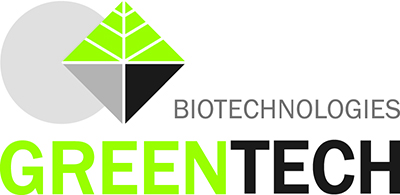Greensea/Greentech presents its lectures at Alg’n’Chem 2011
Greensea/Greentech is proud to present its lectures at Alg’n’Chem 2011, the International Scientific Conference for the Valuation of Algae (7-10 November 2011, Montpellier, France)
Greensea/Greentech is proud to present its lectures at Alg’n’Chem 2011, the International Scientific Conference for the Valuation of Algae (7-10 November 2011, Montpellier, France).
The first conference, “Research and development of secondary metabolites from microalgae” will be presented on November 9th by Mrs Coralie Audoin:
Molecules from marine organisms for therapeutic or cosmetic aims are still underused and research in this field is today one of the promising achievements of blue biotechnology. These substances are often characterized by the presence of chemical elements or functional groups rarely observed in the terrestrial environment. The large marine chemodiversity can be explained by the long history of life in the oceans. Living organisms have progressively become familiar with brackish and fresh water until it finally left the aquatic environment for the terrestrial one. Only a few species were able to undertake this evolution. In the oceans three vegetal worlds are living together: the green, the red and the brown but only the first one was able to leave the aquatic environment. The brown and red algae (macro- and microalgae) have no terrestrial equivalent and their metabolites are almost all original.
In this context, Greensea has developed a strategy for searching and promoting new interesting bioactive compounds from microalgae.
The second conference, “Isolation and Conservation Enhancement of microalgae” will be presented on November 9th by Mrs Carole Vialleix:
How to select, isolate and stock microalgae strains without intrinsic feature modifications is one of the most important challenges in microalgae cultivation. Indeed, microalgae cells are highly sensitive to their environment that may deeply impact the microalgae physiology, its genomic and its biosynthesis of biocompounds.
When a particular microalgae strain is envisaged to produce a particular compound family, the very first question to be asked is how to select the best strain candidate. An exhaustive review of literature and strain catalogues is performed that should end by the identification of the strain and solve the tradeoff: high quantity production of the biocompound of interest compatible with scalable cell cultivation. But Greensea performs another way to obtain the promosing strain candidate by isolating cells from in situ. Microalgae isolated from extreme environment, such as one displaying a high temperature or salinity, show particular and distinct features that does induce the bio-synthesis of specific compounds. Accurately isolating a specific microalgae strain from each other to get a monospecific microalgae is a hard and time-consuming task, so that our goal here is to develop a routine and easy-to-use methodology for speeding-up the process.
Once the best strain candidate is chosen, the next stage is to both conserve it for future cultivation use, and assure that some intrinsic features, such as its ability to grow again and produce the same phytomolecules in a given environment, are kept.
Greensea currently works on selecting the conservation method that both enables to reduce the frequency of re-cultivation in liquid environment while keeping aseptic conditions, and assures that the microalgae strain keeps its own biological integrity.
Alg’n’Chem: www.ffc-asso.fr
Greentech: marketing@greentech.fr





